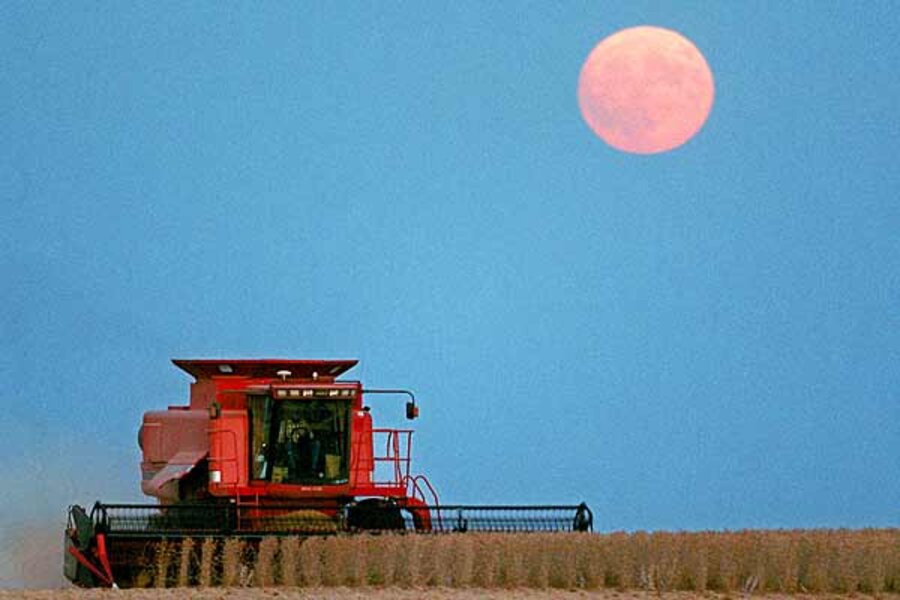Autumnal equinox pop quiz (hint: it's not about horses)
Loading...
Need an excuse to celebrate tonight?
Try welcoming the fall equinox, when jugs of of iced tea yield to jugs of apple cider, pumpkin is a much a seasonal color as it is a squash, and landscapes carpeted with green begin to display splatters of gold, scarlet, orange, and russet.
At 11:09 Eastern Daylight Time tonight (which is 03:09 Universal Coordinated Time tomorrow), the autumnal equinox arrives.
IN PICTURES: Peak fall foliage
That's in the northern hemisphere, of course. South of the equator, winter is yielding to spring. Since one hemisphere's vernal equinox and another hemisphere's autumnal, you'll be on top of your game in either hemisphere if you just call it the September equinox.
Now for the pop quiz. An equinox is:
A. A 24-hour period twice a year with precisely equal hours of daylight and darkness.
B. A condition of automotive trauma in which all cylinders in an engine – four, six, eight, take your pick – are knocking simultaneously and with equal volume level.
C. A brief moment in time twice a year when the center of the sun crosses the celestial equator (basically an extension of Earth's equator into space).
D. A uniquely equine combination of nitrogen and oxygen gas.
If you picked C, you've got it. The September and March equinoxes mark the two moments each year when the center of the sun crosses the celestial equator, or in Earthling terms, appears directly over the equator.
If you like to plan ahead, the March equinox next year will occur on March 20 at 23:21 UTC.
As for the notion of equal hours of daylight and dark during an equinox, it's widely repeated, but not quite true. It is true that two days a year, the hours of daylight and dark are close to equal length. Those days are equiluxes. The March equilux takes place a few days ahead of the equinox. The September equilux occurs a few days after the equinox.
If the changing of the season isn't enough to keep you up this evening, how about the harvest moon? Or breaking out a telescope to view Jupiter during its closest approach to Earth in more than 10 years?
Indeed, only the moon will be brighter. The reason: Jupiter will be about 46 million miles closer to Earth than it typically reaches during opposition – a point in the two planets' orbits when Earth lines up between Jupiter and the sun. [Editor's note: The original version overstated Jupiter's brightness.]
To be sure, the Jovian planet is still a distant speck. It orbits the sun at an average distance of nearly 484 million miles, compared with Earth's 93 million-mile distance from the sun. But the elliptical shape of both planets' orbits ensures that roughly once every dozen years or so, one of the flybys will be closer than the others.
So, September equinox, harvest moon, a close encounter with Jupiter – take your pick. Three astronomically nifty reasons to toss a cinnamon stick, cloves, and cider into a Crock Pot, then take a steaming mug-full outside to enjoy while you watch the show.





